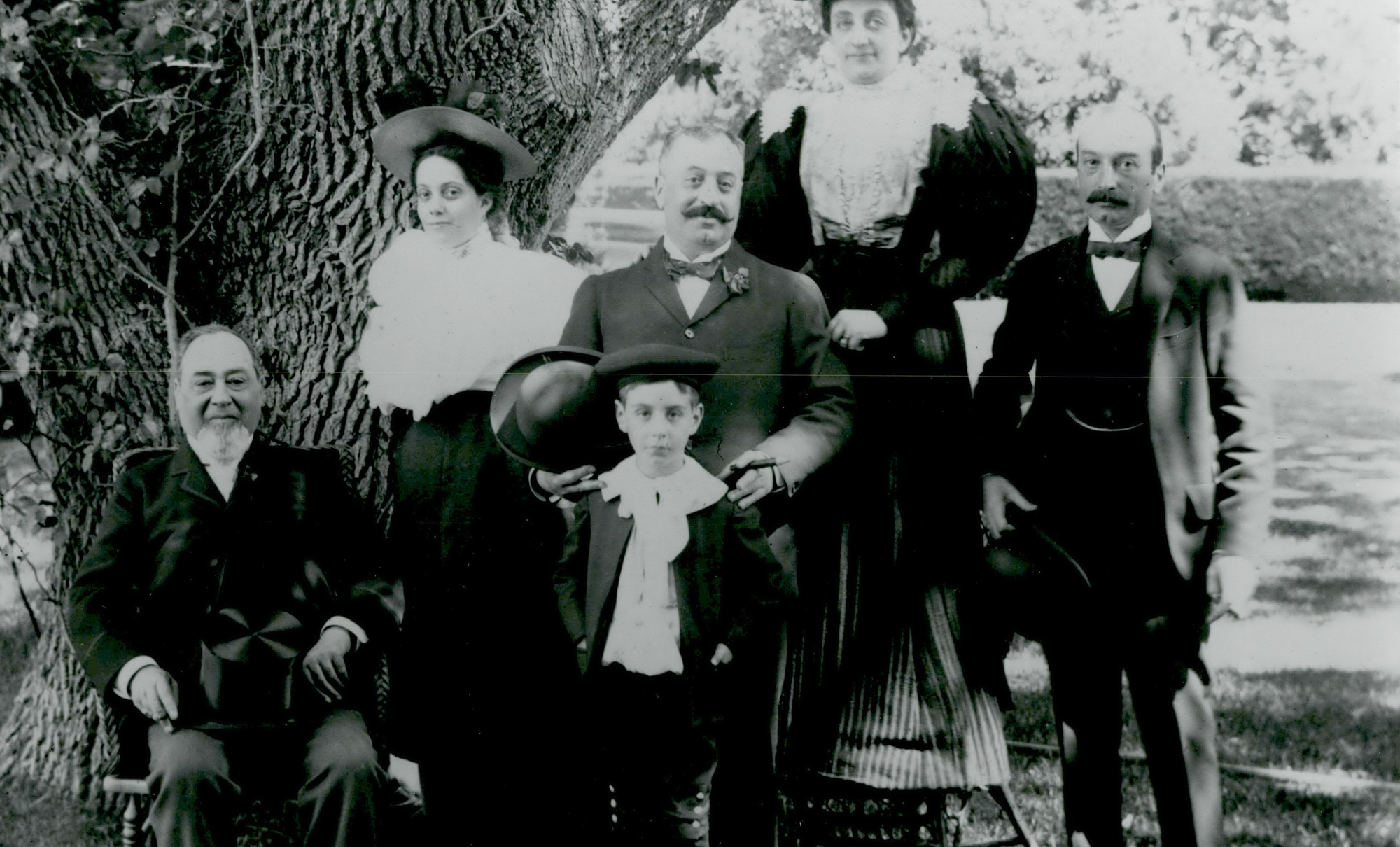June is Immigrant Heritage Month and to celebrate, here are a few stories of immigrants who shaped our company and molded an iconic American brand. From founder Levi Strauss to those who adopted the brand as new Americans, immigrants have played a key role throughout our history.
Two immigrants create an American Icon
Born in Buttenheim, Bavaria, in 1829, Levi Strauss fled today’s Germany bound for New York for a new life and new possibilities. As the youngest son in a Jewish family, Levi had grown up in a climate of restrictions and prejudice. America offered the freedom to dream big and build a legacy. Arriving in the 1840s, he changed his name from Loeb to Levi and just one month before heading West, became an official American citizen.
Young Levi was likely primed for adventure when he hopped on the steamer bound for Panama, then trekked by land across the isthmus and boarded another steamer sailing north to the shores of the California Gold Rush. He arrived on a rainy March day in 1853 and soon set up a dry goods wholesale business on San Francisco’s waterfront under his own name —Levi Strauss & Co.
Within two decades, Levi had established up a successful business by making connections with retailers throughout the West. He also became a respected civic leader and philanthropist. In the 1870s, he even worked as part of the California Immigrant Union.
Almost 20 years after Levi set foot in San Francisco, a letter arrived at Levi Strauss & Co. with an intriguing proposal. Tailor Jacob Davis, a customer in Reno, Nevada, ordered some supplies and described a tiny innovation in sewing men’s trousers—adding rivets to the pocket openings.
Like Levi, Jacob was an immigrant only two years younger than our founder. Born Jacob Youphes in Riga, Latvia in 1831, he traveled to America in 1854, changed his surname to Davis, and opened tailor shops in New York and Maine before settling in the West.
Jacob was operating a tailor shop in Reno, Nevada in 1871 when a woman asked him to sew pants for her husband, making them as strong as possible. Davis had some copper rivets in his shop, which he used to attach straps to the horse blankets he made for local teamsters. He thought it might be a good idea to fasten the pockets with the same rivets. The pants were an immediate success—so he wrote to Levi with his pitch. The rest is history.
The immigrant women behind the seams
Jacob Davis managed the Levi Strauss & Co. plant in San Francisco, which became a hub for many immigrants arriving in the United States along the Pacific Coast. Among these early immigrants was young Masilia Foppiano, who arrived from Italy. Masilia was hired by Levi Strauss & Co. as a seamstress. She was so skilled at her work that she was among a small group selected to sew Koveralls—one-piece denim children’s suits—at the Panama Pacific International Exposition in San Francisco in 1915. Around 1917, Masilia met and married her sweetheart and settled in Sonoma, north of the city. Masilia’s family remains in Sonoma to this day, more than 100 years from when they first settled there, and her legacy lives on at Levi Strauss & Co. – her great granddaughter Katy Todd currently works at our Levi Strauss & Co. headquarters.
Like Masilia, Annie Heinzer’s skills prepared her for work when she immigrated to San Francisco in 1923. Levi Strauss & Co. soon hired Annie as a sewing machine operator at the Valencia Street factory. “I worked five days a week, 8 am to 4:30pm,” she shared in an oral history interview. “I earned $1.65 a day.”
Annie sewed pockets for seven years until her husband, a stevedore on the city’s waterfront, died unexpectedly. With her financial survival resting on her shoulders, she continued improving her skills, attending night school after work.
Annie’s efforts eventually paid off when she was promoted to assistant forelady. She supervised 125 women on an assembly, 30 girls in a line, each constructing a piece. “Every nationality worked at the factory,” she recalled of her time with the company, a nod to the immigrant community that found employment here.
Consumers of all backgrounds – and prominence
Along with employees, many Levi’s® consumers are immigrants – and they all have great Levi’s® stories to tell.
Marlin More, a farmer in California’s Central Valley, still has the Levi’s® 501® jeans his immigrant grandfather, Manuel Dutra, wore whenever he went into town. “My grandfather was born in the Azores in 1890 and he immigrated to Tracy, California in 1920 where he eventually owned and operated a small dairy,” says Marlin.
When Manuel passed away, Marlin’s mother kept her father’s Levi’s® jeans as a keepsake. “Today my mother is 91 years old and she recently passed these Levi’s on to me,” says Manuel. “I now live on a small ranch east of Stockton and I will proudly wear these 75-year-old Levi’s whenever I go into town as my grandfather once did. I also plan on passing the jeans on to my son once I am no longer able to walk.”
Perhaps one of the most celebrated American immigrants to don Levi’s® products arrived in the in the 1930s. During the time Nobel Prize-winning Physicist Albert Einstein was becoming a naturalized American citizen, he made a purchase of a single coat that he told a colleague would be all he needed — a Levi Strauss leather jacket—and he wore it regularly. Einstein was photographed wearing his Levi Strauss jacket often and was even featured wearing it on the cover of Time Magazine in 1938.
We celebrate the immigrant experience that has shaped our past and will continue to enrich our present and future.







